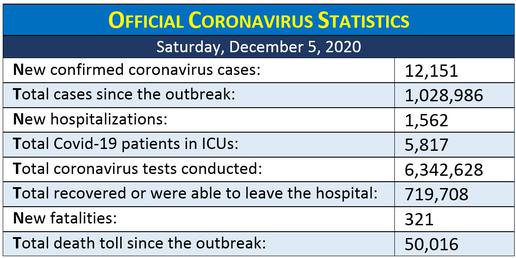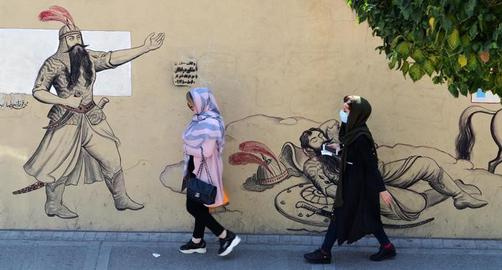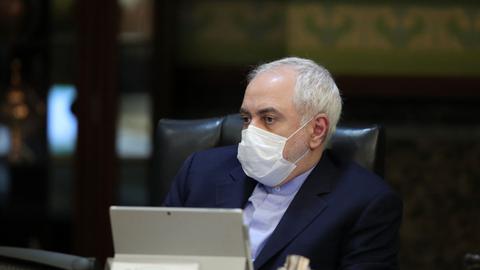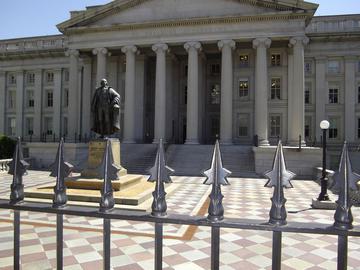Foreign minister Mohammad Javad Zarif has accused the US of “crimes against humanity” because it had prevented Iran from purchasing a Covid-19 vaccine. “The situation in Iran is very bad,” he said in an interview on December 3. “Iran is being hit by the third wave of coronavirus. Our medical personnel is doing the best that it can [but] we are suffering from an economic war. The US is even preventing us from accessing our own money to buy coronavirus vaccines. And they are lying if they say otherwise.”
This echoes claims made about the flu vaccine earlier in the year. In fact, it would appear that the narrative of the coronavirus vaccine in Iran is repeating the same pattern as the flu vaccine followed earlier this year.
After alarms were raised that the flu season would coincide with the second wave of the coronavirus pandemic, the health ministry assured people that it was importing more than 12 million doses of flu vaccines and that they would be distributed as the colder season arrived.
Despite the fact that practically every single health ministry official talked about the flu vaccine in late summer and early autumn, no further information about the domestic production of a flu vaccine has become available since that time.
In the end, a little more than two million doses of flu vaccine were distributed for the inoculation of high-risk groups such as those suffering from underlying diseases, the elderly and pregnant women. The government announced that it had purchased the promised doses of flu vaccine but, due to sanctions, it has been prevented from importing them.
There was another similarity between the government’s statements about coronavirus and flu vaccines: debate over their effectiveness.
On December 5, President Rouhani pointed out that no vaccine was 100 percent effective. “Even if we get a good and effective vaccine and we make it available to the people, we must still follow health protocols because it is not clear how effective it is, what the complications will be and how long it will take the vaccine to work after it is injected.”
At the same time officials were making promises about the flu vaccine earlier in the year, many of them also talked of the “ineffectiveness” of the flu vaccine.
As well as officials talking about the domestic production of flu vaccine, there have also been reports that Iran is developing its own vaccine. According to Health Minister Saeed Namaki, there has been progress: the next step is to test the vaccine on humans.
There have recently been many reports about coronavirus vaccines that have proved effective in trials. On December 3, the United Kingdom became the first country to approve the Pfizer vaccine. The Islamic Republic has announced many times that it is ready to buy Covid-19 vaccines and there have been unconfirmed reports that it will be paid for out of the National Development Fund. But again, such promises are undermined by doubts over the effectiveness of these vaccines and by a tendency to blame sanctions for anything the government is unable to provide.
Confusion Over Alert Levels
The Iranian National Coronavirus Taskforce designates a city as being in a red state of alert if 10 individuals out of 100,000 of the population have tested positive for coronavirus on a daily basis. If the number is nine or less, then the city is determined to be in an orange state of alert. This method of classification has been very confusing because in many places, even if only one less individual tests positive, the alert status changes from red to orange, allowing some businesses to reopen and, as result, spread the virus again.
One example is Tehran, the most populous city in the country. Based on the taskforce’s definition, the situation in a city does not change noticeably when it goes from red to orange or vice versa. Tehran, which was downgraded to orange alert on December 5, will not be very different from Tehran the week before, when the city was on red alert. It appears as though every week or two the government tends to change the alert level so that some businesses can reopen for a while. Based on the ordinance issued by the National Coronavirus Taskforce, only essential businesses can remain open if a city is on red alert, while if it becomes orange, businesses falling under “category 2” are allowed to reopen.
“Category 2” businesses and places include indoor and outdoor shopping malls, roofed bazaars, large shopping centers, car dealerships, sports clubs, barbershops for men, cosmetics and health shops, carpet sellers, homeware outlets, gift and toy shops, garment shops, photographers, real estate agents, digital printing services, cooked food preparation centers provided they follow health guidelines, confectionaries and fruit juice and ice cream sellers. These businesses can remain open as long as the alert level is orange, but when and if a city is deemed to be in a red state alert, these businesses must close down.
The situation has led Mohsen Hashemi Rafsanjani, president of Tehran City Council, to speak out in protest. Tehran has a population of about nine million, he said, and “if 900 coronavirus patients are hospitalized then the situation is red, but it is orange if this number is less than 900. The dividing line between red and orange must be better defined. To announce that the situation is orange if 899 are hospitalized and red if 901 are hospitalized is not very scientific or logical and it must be corrected.”
Even President Rouhani appears to be aware of this problem. “Tehran is in an orange state of alert but we are on the verge of going back to red,” he said. “If necessary precautions are not taken and enough control is not applied, Tehran might return to a red state of alert in two weeks.”
Commenting on the first day Tehran was moved into an orange alert category, Nader Tavakoli, deputy director of Tehran Coronavirus Taskforce, said: “it is natural that traffic with public transportation will increase again but, perhaps, the nighttime traffic curfew has trained people to comply with health protocols.” Some would say this is wishful thinking.
According to Tavakoli, the number of patients in a critical condition is still high.
Iran’s Latest Coronavirus Statistics
In her daily briefing for December 5, the health ministry spokeswoman Dr. Sima Sadat Lari announced the official coronavirus statistics for the last 24 hours:

Dr. Lari reported that currently 64 cities are red, 278 are orange and 106 are yellow.
According to her, the average number of hospitalizations during the week from November 28 to December 5 was 17 per 100,00 of the population. The provinces of Ilam, Semnan, Ardebil, Kohgiluyeh and Boyer Ahmad and Yazd had the highest number of hospitalizations, well above the national average. The average number of fatalities for the same seven days was 36 per one million of the population and the provinces of Yazd, Kurdistan, Ardebil and South Khorasan had the highest number of deaths.
The health ministry spokeswoman warned that despite the reduction in the number of red cities and the drop in coronavirus fatalities in the last week “the rate of hospitalizations in some provinces such as Gilan, Mazandaran and Golestan is rising and the situation is unstable and fragile despite relative improvements.”
This is part of IranWire's coronavirus chronology. Read the full chronology
visit the accountability section
In this section of Iran Wire, you can contact the officials and launch your campaign for various problems




























comments